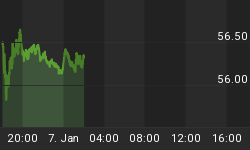U.S. employers added 7.5 million jobs in May and June, following a devastating April in which millions filed for unemployment benefits. But July is the tricky month because the trend has failed to continue at the same pace making it look like the pandemic surge is now threatening the recovery momentum. Even though the Department of Labor will release official data by the end of the week, Dow Jones estimates that 1.26 million jobs were added in July.
That might sound fantastic, but the resurgence of the virus added new volatility to the outlook and economists now fear new layoffs.
Last month, medical experts called for a restart of the COVID lockdown as the United States adds tens of thousands of new cases daily. Twenty-two states, including Washington, Michigan and California, have imposed new restrictions, resulting in fresh layoffs.
As for the previous two months, the healthcare, logistics and construction industries presented with the highest demand for new workers.
In June alone, employers added nearly 5 million jobs. Of those, the leisure and hospitality sector dominated with 2.1 million jobs, while retailers added 740,000 jobs, and education and health services opened up 568,000 jobs.
Compared to the five-decade-low 4.4% unemployment rate we saw in early March, the current rate of 11% looks great, with the number of unemployed persons falling by 3.2 million to 17.8 million, according to the US Department of Labor.
That’s massive progress compared to April’s 15%, a level unseen since the 1930s Great Depression. It essentially wiped out all of the jobs created since the last recession.
The pace of layoffs has slowed, indeed--and as parts of the US reopen it is expected that the layoff numbers will continue to drop and even bounce back. But the timing is tricky--and no respite in COVID infections could throw it all off track again.
Goldman expects growth to rebound 19% in the third quarter and for the economy to be nearly recovered by the end of 2021. Still, some industries and sectors, such as traditional retail and business travel, may never fully recover.
Related: High-Stakes COVID Vaccine Game Targeted By Russian Hackers
Economists are warning that even when shutdown orders are lifted, consumer spending may be slow to recover and the companies that intend to rehire workers will struggle to do so if the coronavirus outbreak lasts into late summer or fall.
A recent report by the Becker Friedman Institute at the University of Chicago projects that 42% of jobs lost in the pandemic are never coming back. And even if some jobs return, it’s not going to be immediate.
Still, full job market recovery is far from certain as long as the US economy remains semi-open and millions of people are relying on government aid to make ends meet.
Despite the increase of job posting from early June, many went unanswered and some employers attributed this to unemployment benefits that give many workers an extra $600 a week.
Those benefits expired on July 31st month and Congress is wrangling over whether to extend or alter them.
Republicans are keen on replacing that with incentives for companies to rehire workers, claiming its generosity is a disincentive to find work. Democrats have been pushing for an extension, arguing that the economy is still too weak and that the benefits are still necessary.
By Fred Dunkley for Safehaven.com
More Top Reads From Safehaven.com:
















